Quality SEO Content: The QRIES Approach for Better Rankings
Quality SEO content keeps readers glued to the page.
The key?
Producing content that satisfies both search intent and user experience.
But most SEO content fails to do this. The focus is on on-page optimizations while ignoring what actually keeps readers engaged.
In this guide, you’ll learn how to use my QRIES framework to:
- Create content that naturally aligns with Google’s quality standards
- Build authority that naturally attracts backlinks
- Scale quality content production
First, a refresher on how Google assesses content quality.
How Google (Probably) Evaluates Content Quality
Google can see which content holds visitors by tracking user behavior. That means Google knows how long visitors stay on a page, how much they scroll, and whether they explore more of the site.
When users do these things, it suggests the content successfully holds their attention. And when that happens, it can act as a signal to Google that the content is relevant and helpful.
This in turn can lead to higher rankings, more traffic, and more conversions.
But how do you create content that users love and want to consume more of?
For starters, we can use Google’s E-E-A-T guidelines to point us in the right direction. E-E-A-T stands for Experience, Expertise, Authoritativeness, and Trustworthiness.

While not a specific ranking factor (and not the only thing to consider when creating high-quality content), Google uses E-E-A-T as a framework to evaluate content quality.
Let’s quickly go over these guidelines:
- Experience means the content should be created by someone who truly understands the topic firsthand
- Expertise means the creator should be a subject matter expert with in-depth knowledge of the topic
- Authoritativeness reflects the reputation and credibility of the source (creator or website)
- Trustworthiness assesses whether the information is reliable and accurate and whether the website is safe and reputable
When users find expert information and feel confident that it’s accurate, they’re more likely to trust it (and the website it’s on).
And the more they trust the content, the more time they spend consuming it. As people usually want to hear what real experts have to say.
In the end, it’s a cycle.
The more your content aligns with Google’s quality guidelines, the more it’s likely to satisfy users. And the more it does that, the more likely you are to rank high in the search engine results pages (SERPs).
How to Use the QRIES Framework to Create Quality SEO Content
While E-E-A-T tells you what you need to have in each article to rank well, QRIES tells you how to do it.
Think of QRIES as E-E-A-T in practice, because it translates the vague quality guidelines into a more applicable checklist.
QRIES stands for:
- Quotes
- Research
- Images
- Examples
- Statistics
This framework helps standardize content quality. And it makes it easier for writers to remember which elements every piece of content needs to contain.
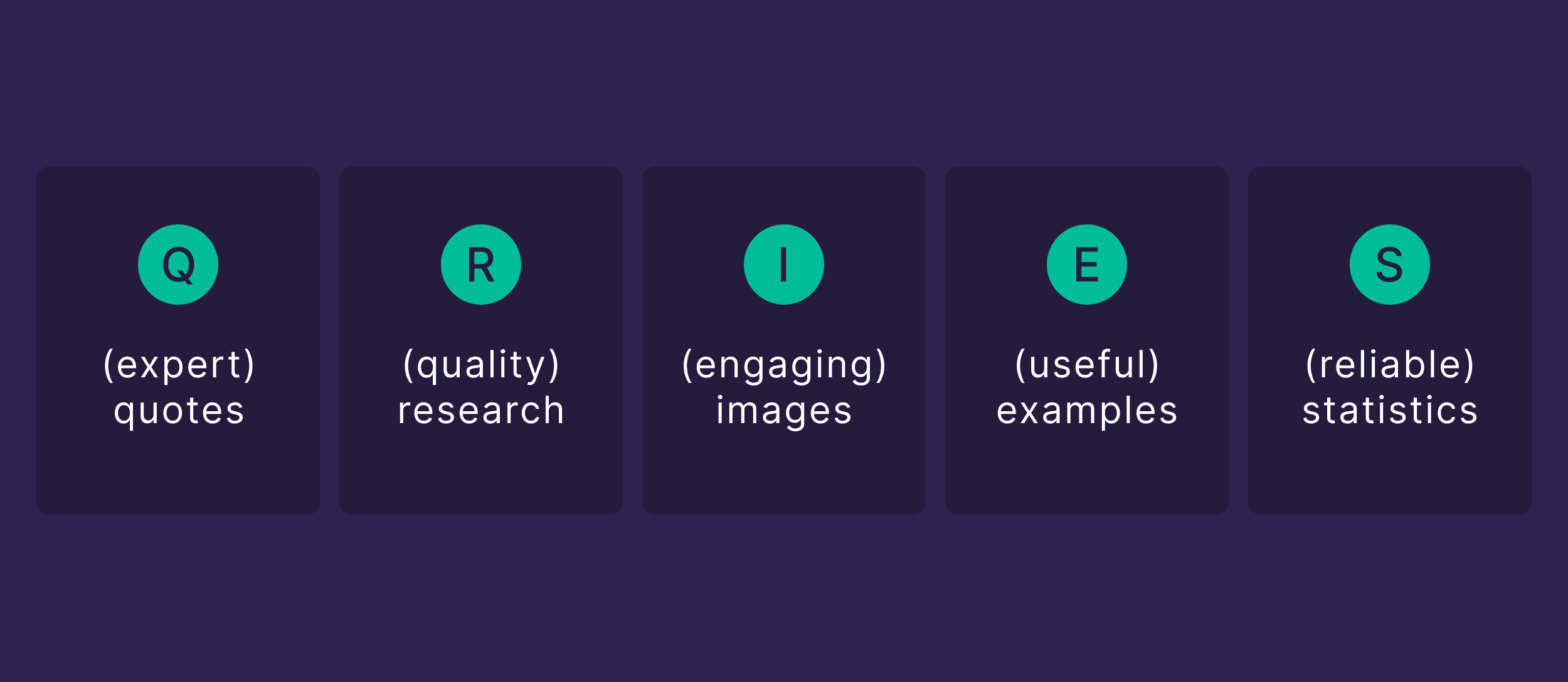
Let’s discuss how you can follow this framework to create better-quality SEO content.
Q: Use Expert Quotes in Your Content
By integrating expert voices into your content, you not only align it with E-E-A-T guidelines. But you also create a more engaging experience for your audience.
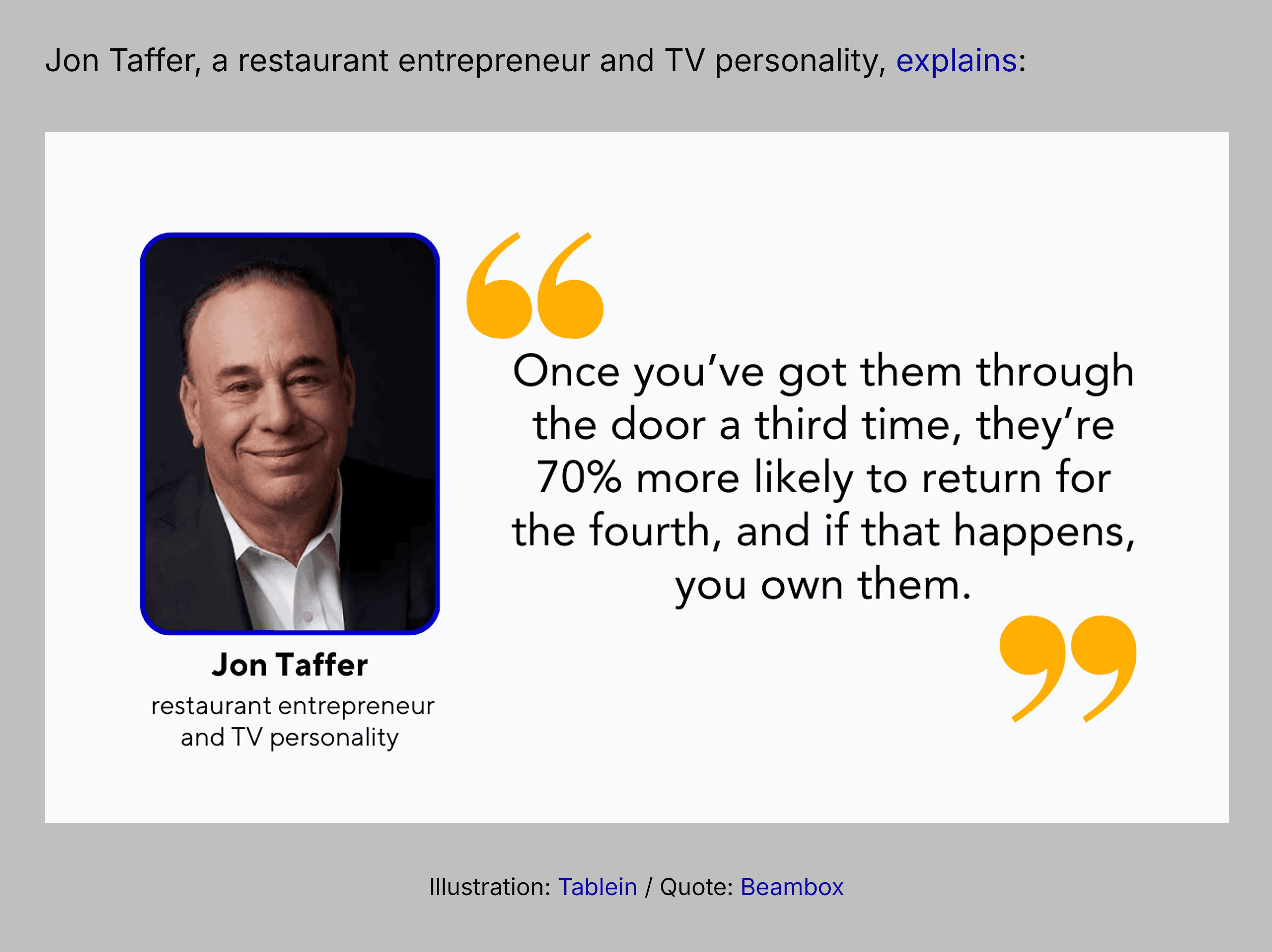
For starters, you’re signaling to Google that your information is authoritative and trustworthy. After all, it’s backed by credible voices.
This also gives the impression that the content is well-researched and that you considered multiple perspectives. Readers don’t have to take just your word for it, because now you have other relevant people agreeing with your statements.
Plus, expert quotes can break up dense content sections. Making them more interesting and easier to read.
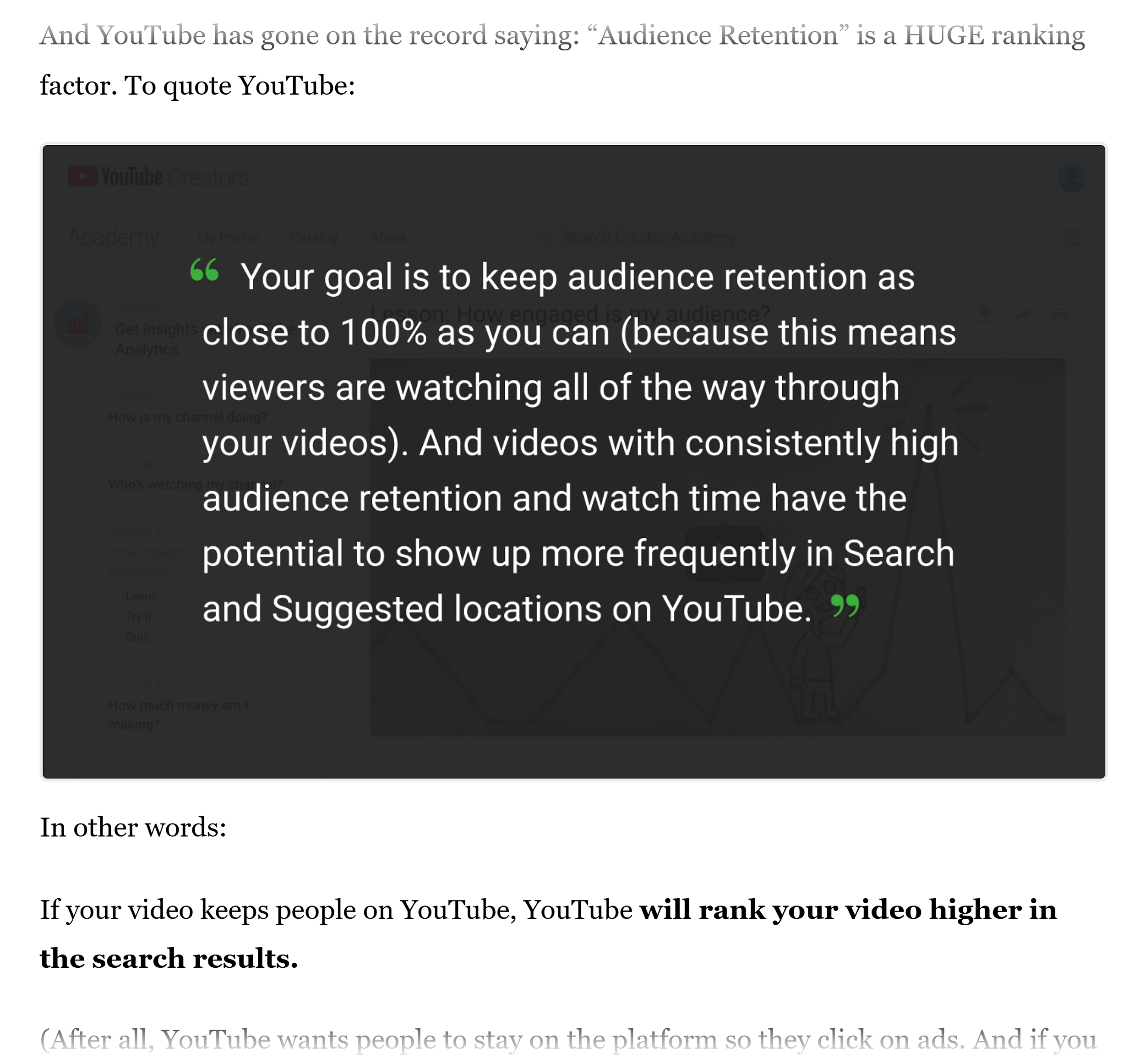
So they also play a role in content user experience (UX), providing visual breaks and keeping your reader’s attention.
There are two primary ways to source expert quotes:
- Conducting interviews
- Finding existing material online
While interviews can give you unique insights and tailor-made responses, they’re often time-consuming and difficult to scale. Especially if you’re working on a large volume of content.
But there’s a way to compromise between doing 1:1 interviews and searching for existing quotes on the internet.
How?
By using platforms that specialize in connecting content creators with subject matter experts (SMEs).
Nowadays, there are plenty of such platforms, for example:
- Leaps
- Featured
- Connectively (formerly HARO)
They can be useful and help you scale getting SME insights—but use them with caution.
These platforms also tend to be (over)used by marketing teams, not providing you access to the experts themselves.
So you might get a lot of responses for your question, but you’ll have to sift through the noise to find a handful of truly valuable insights from real experts.

That’s why using snippets from previously published expert interviews as quotes is a more scalable and effective approach.
In this case, you simply leverage material already shared publicly, tapping into expert opinions without having to conduct the interviews yourself.
That’s precisely the approach we use a lot at our agency because it’s easy, fast, and scalable.
Industry magazines are a great place to start finding these quotes, as they often feature interviews with top professionals.
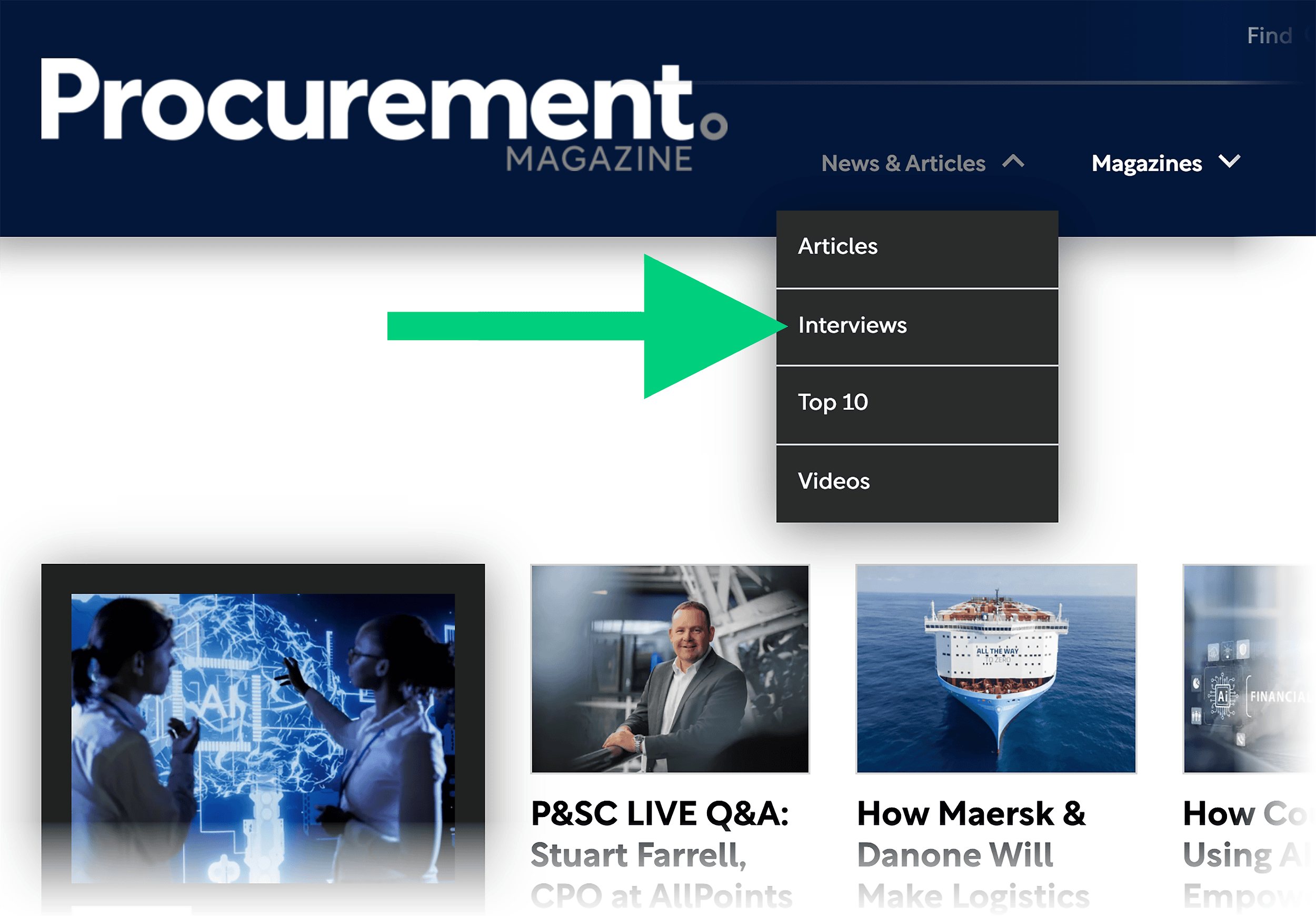
You can also find experts sharing their opinions on social media, especially on LinkedIn or Twitter.
But if you want to take things a step further, try podcasts and YouTube videos.
Many experts speak at length on relevant issues in these formats, offering you a treasure trove of potential quotes you can integrate into your content. (And your competitors are less likely to be taking the time to find these kinds of quotes.)
No matter how you find your quotes, just make sure to properly attribute these sources to maintain credibility.
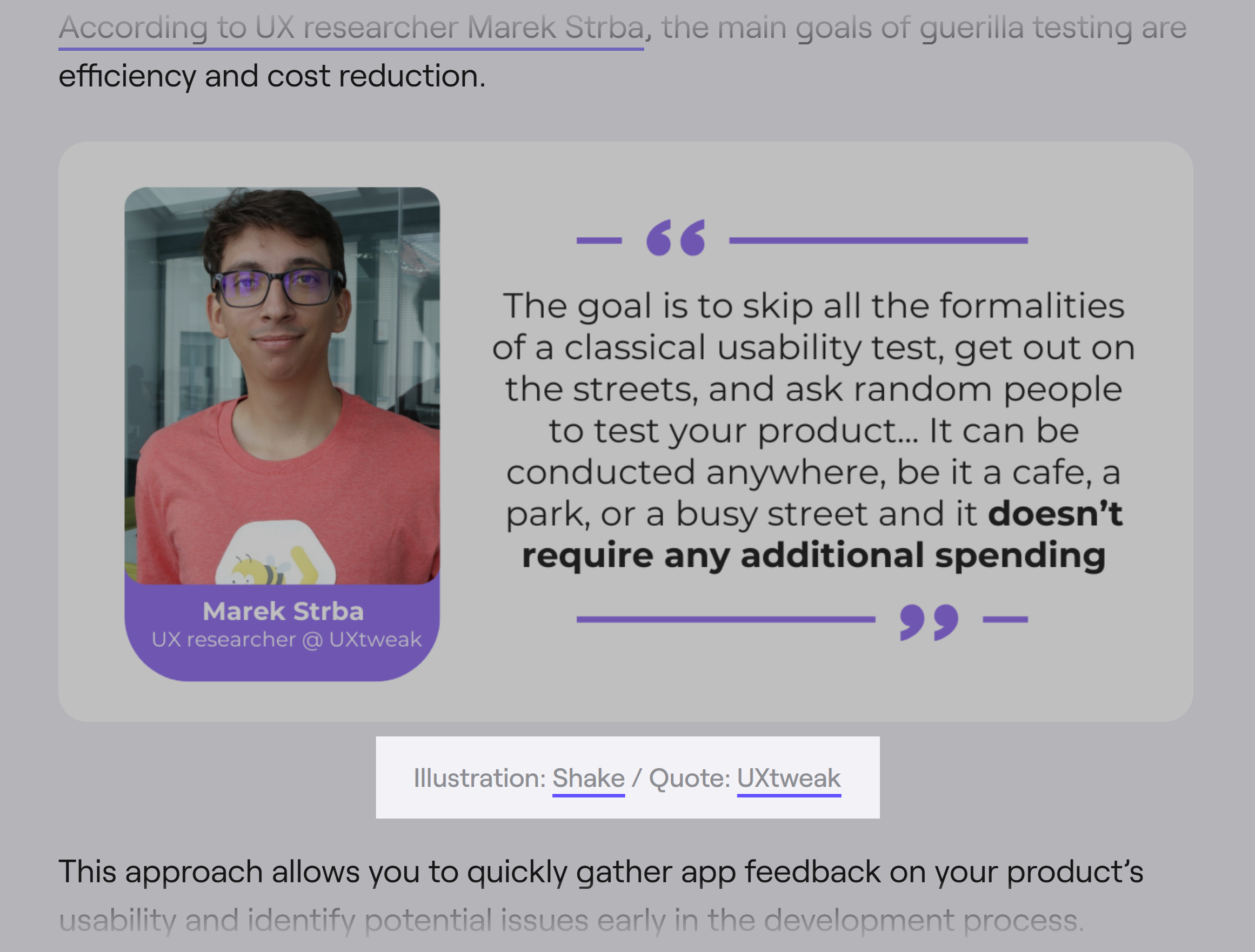
Overall, using expert quotes adds another layer of insight to your content.
Instead of just hearing one voice (yours), readers benefit from the knowledge and perspectives of various relevant figures in the field.
R: Base Your Information on Research
Without in-depth research, you can’t provide accurate information. Especially if you don’t know the topic inside out.
Only through extensive research will you get a full picture of the subject matter. Then, your article will stand out from the rest because it doesn’t just scratch the surface of the topic.
Instead, it goes deeper and offers nuggets of useful information not available elsewhere.
When you do that, you satisfy both the Expertise and Trust portions of the E-E-A-T guidelines.
To become good at research, understand that there are two main types: fast and slow.
Knowing when to apply each method will save you plenty of time and lead to better results.
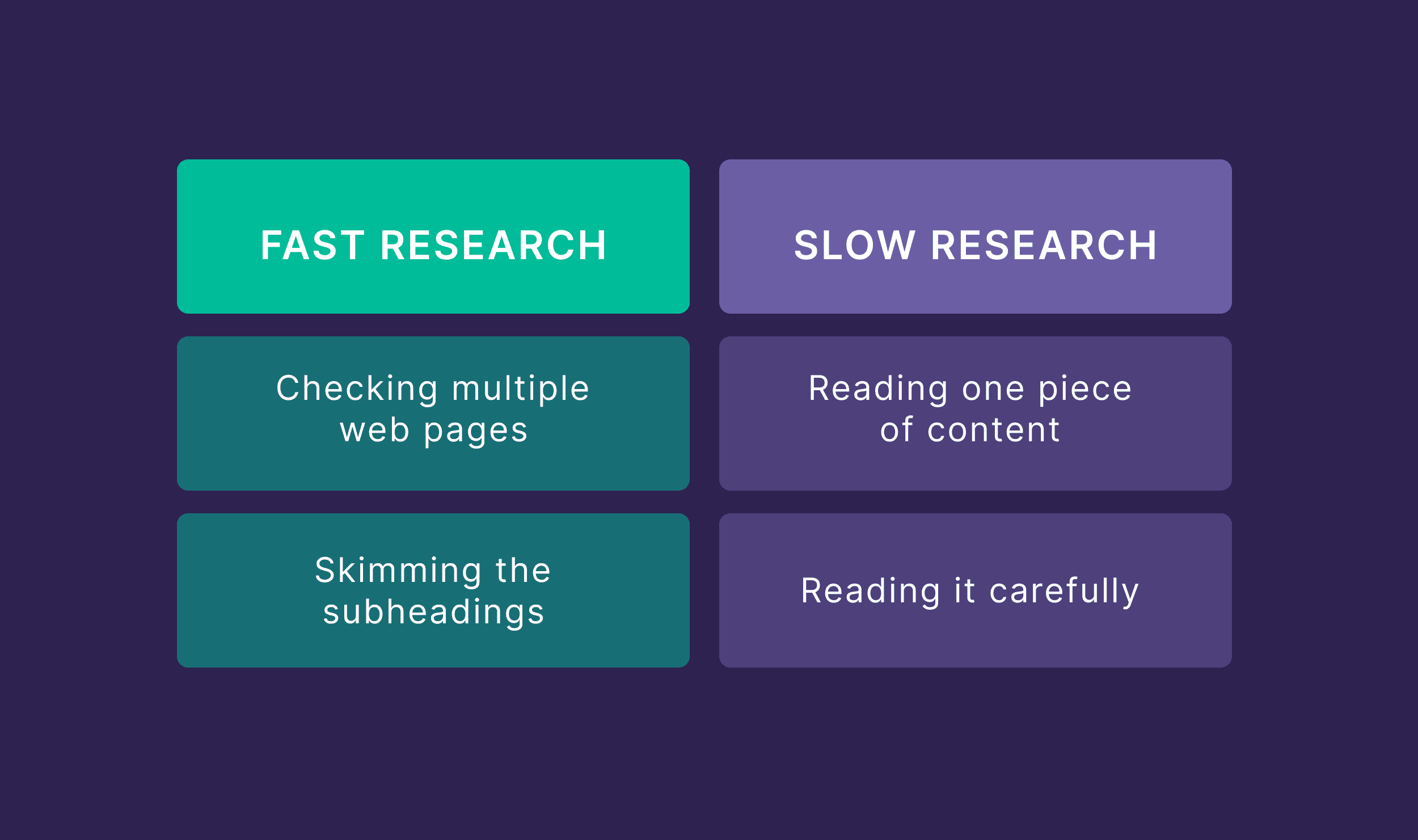
When you first start getting to know a new topic, use fast research. This is a surface-level method, where you’re opening multiple tabs and scanning the content quickly to identify the pages with the most useful information.
Basically, you’re sifting through dirt to find nuggets of gold. And there will likely be a lot of dirt.
Once you’ve identified a few high-quality sources worth exploring further, dive deeper into them (with slow research), reading carefully to extract valuable insights.
That’s how you cover more ground without feeling overwhelmed.
But don’t limit yourself to one format of research materials.
Reading blog posts should be just the first step—look for interviews, watch relevant YouTube videos, and, if possible, read books on the subject.
Shallow research leads to shallow content, which readers (and Google) will quickly notice. This type of thorough research gives your content a richness that generic posts can’t match.
Spend 80% of your time diving deep into the subject and only 20% on the actual writing.
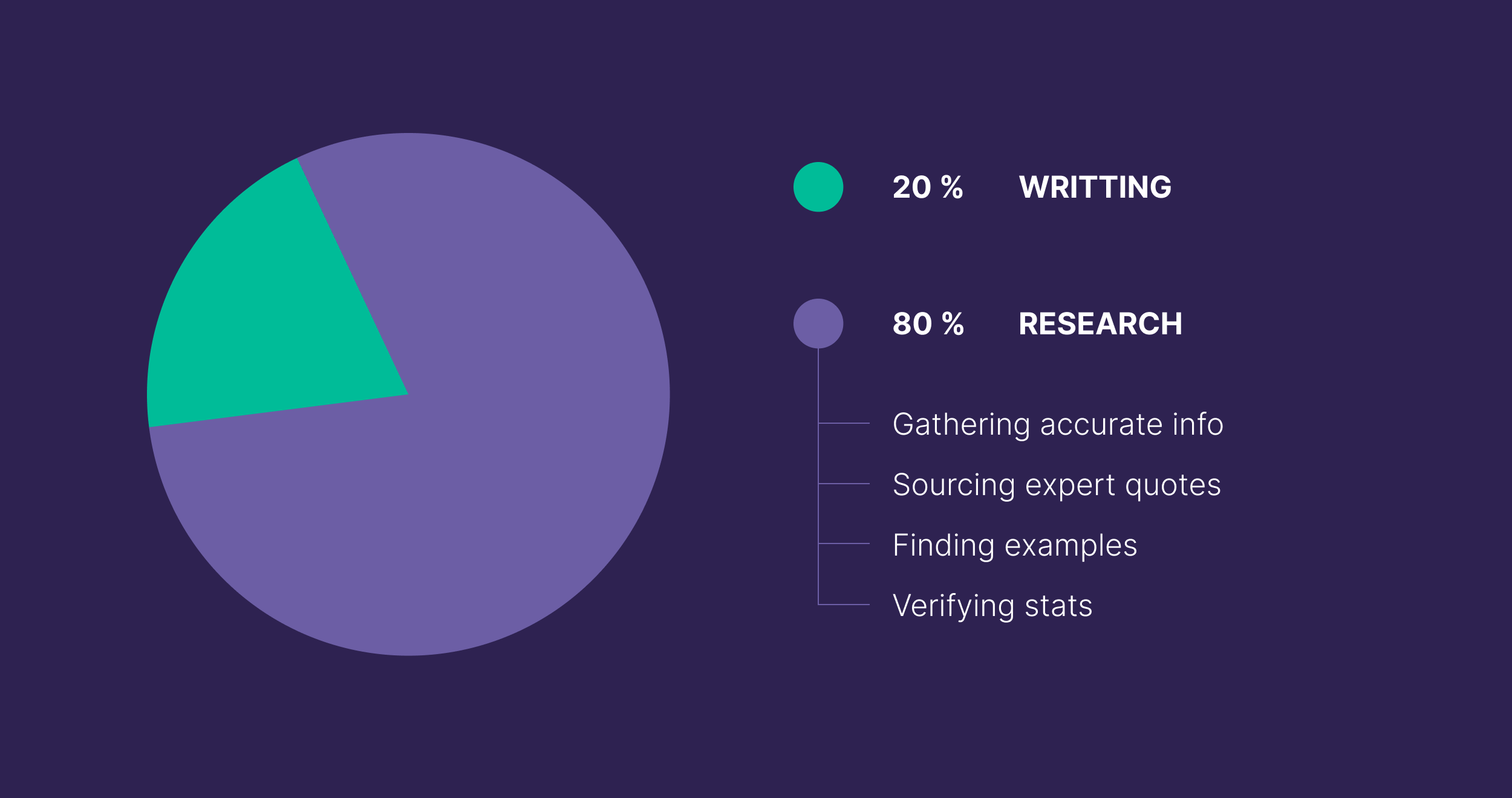
Many think writing is the harder part, but it’s often the opposite.
Why?
Because when you’ve thoroughly researched and understood the topic, then writing becomes faster and easier.
You have all the information already in your head (or in your notes). At that point, it’s just a matter of how quickly you can type and organize it.
But words aren’t the only component of high-quality content.
I: Use Engaging Images and Other Visuals
Many blog posts written by subject matter experts don’t rank well on Google despite being full of valuable insights. (And despite seemingly ticking the E-E-A-T boxes.)
Why?
Because quality isn’t just about the information itself. It’s also about how you present the information.
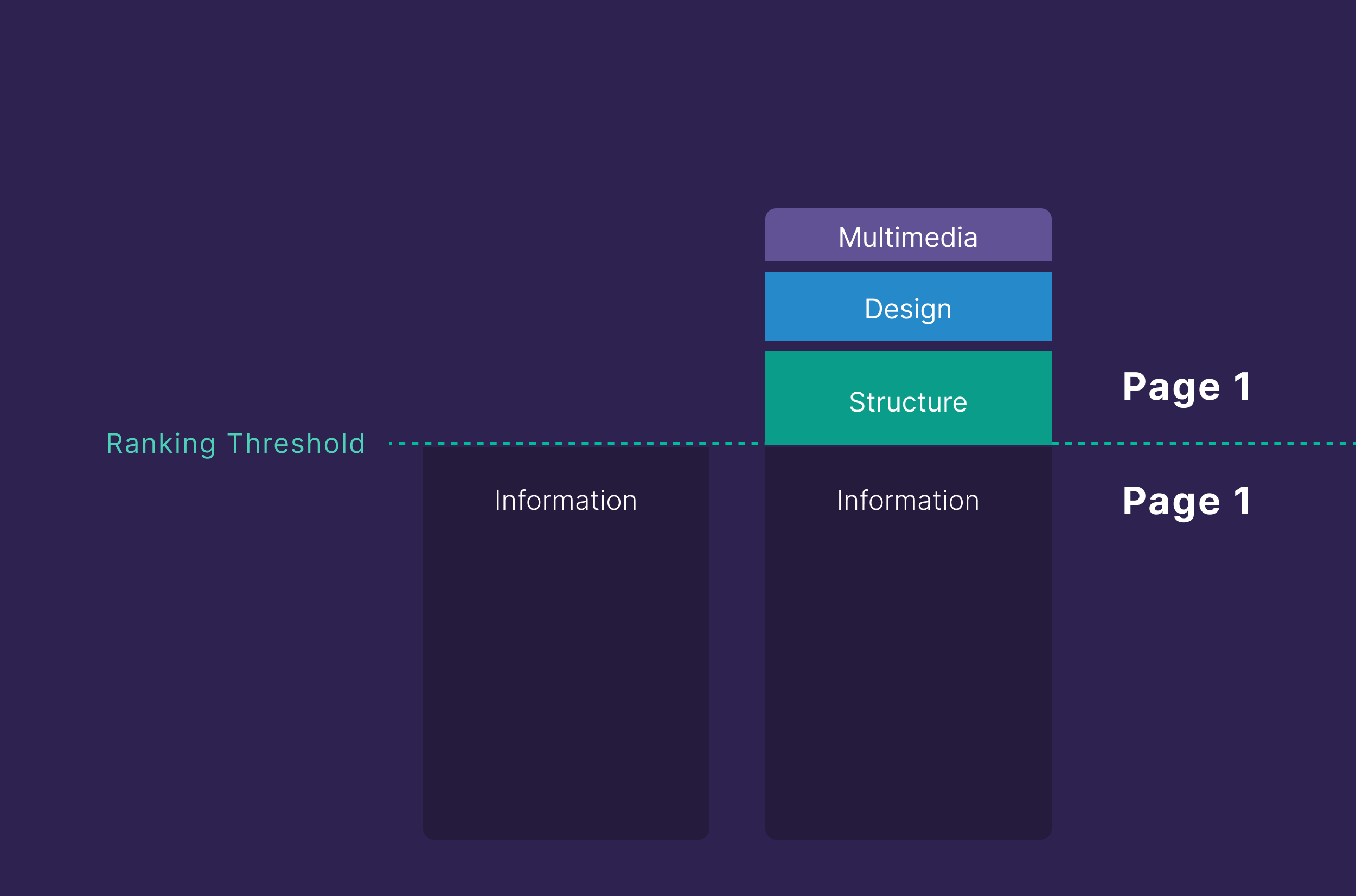
You could have the most insightful piece in the world. But if you deliver the information in a dry manner that fails to engage users, they won’t stay with it for long.
The bottom line: how you present, lay out, and word the content is often just as critical as the knowledge you share.
And that is exactly where images can help you out.
They don’t just help people remember things more effectively—they also grab attention and offer mental breaks from reading long-form content. Making a piece of content much more digestible.
Images can encourage readers to spend more time on the page, boosting your engagement metrics and potentially leading to higher conversion rates.
However, this only happens when the images truly add value to the content.
There’s a big difference between contextual visuals and purely aesthetic or decorative ones.
To unlock the true potential of images, make sure they complement the text and show what you’ve written about in action, such as:
- Charts to explain data
- Diagrams to break down complex ideas
- Screenshots to demonstrate how a tool works
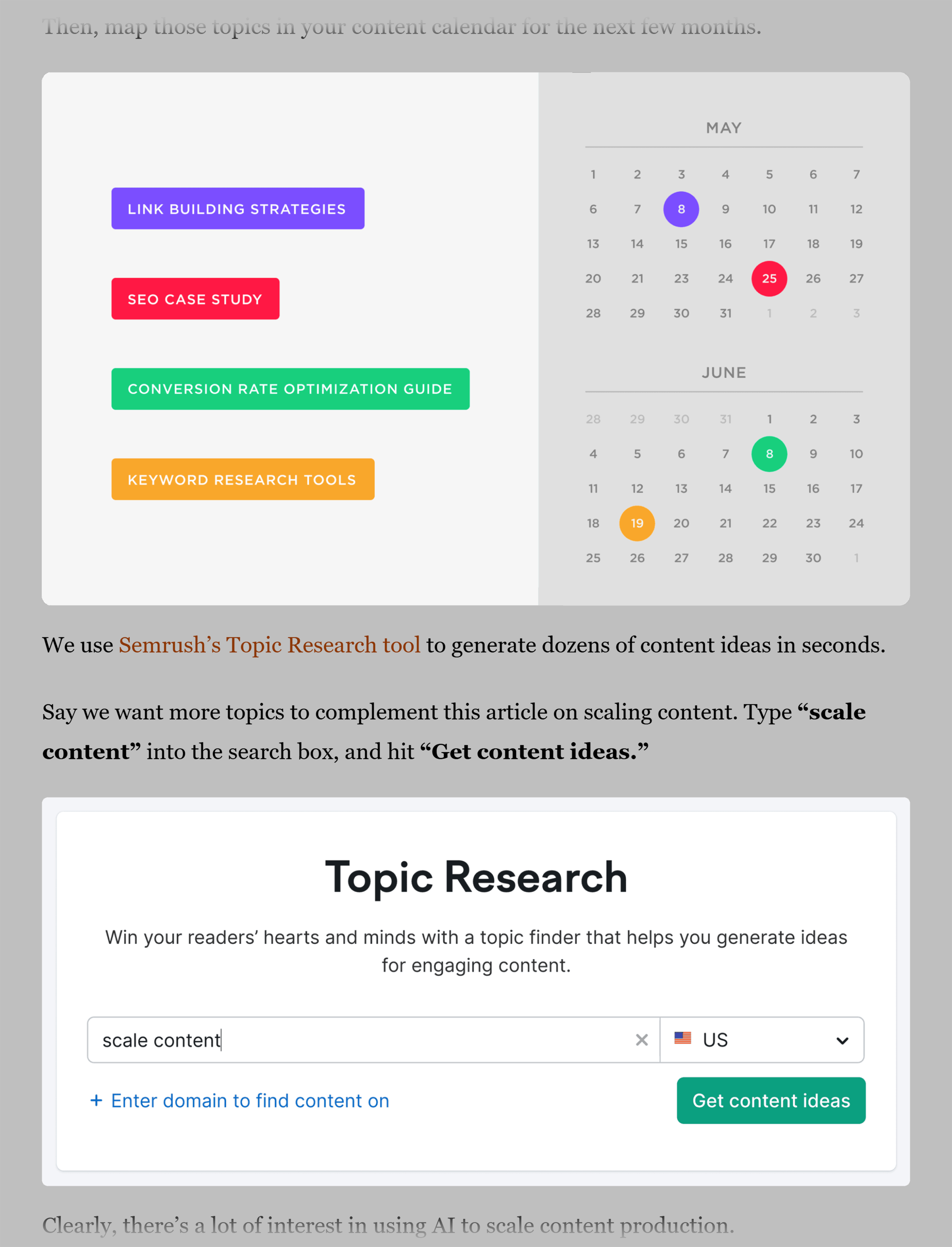
Stock photos that are only loosely related to the topic might look nice. But they typically fail to improve the reader’s understanding of the topic.
You don’t need professional designers to level up your content with custom visuals. You can just use pre-made templates, tweak the colors and fonts to match your brand, and rearrange the elements as needed.
You can do this with a tool like Canva.
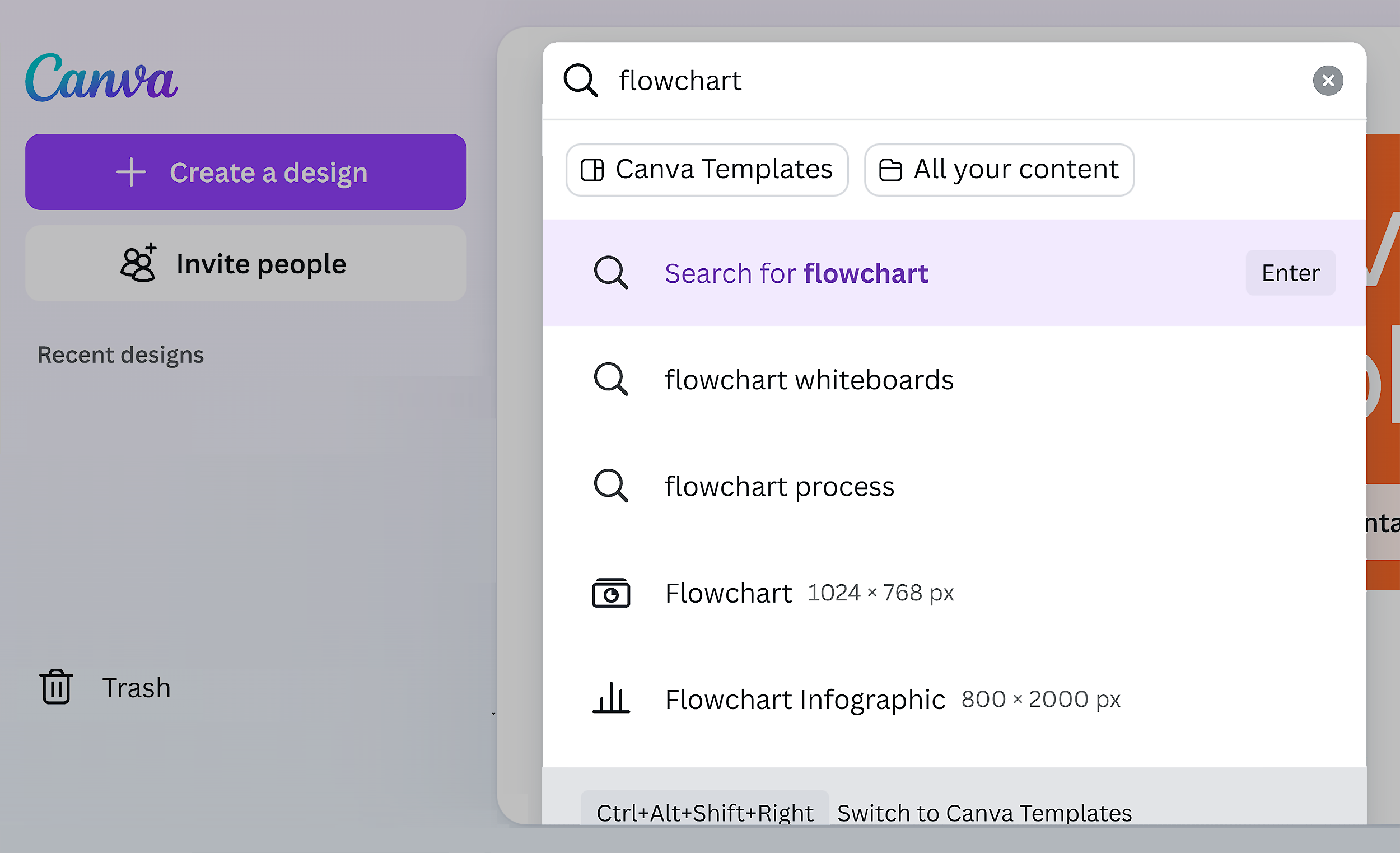
But image creation is only part of the equation: placement matters too.
Good places to include images and graphics include:
- Within large sections of text to break up the paragraphs
- Following a step in a process to show how it’s done
- When you’re discussing examples
By doing this, you’ll provide natural visual breaks for readers and help them process the information better.
(Like we have done in this blog post.)
E: Add Examples and Storytelling
One of the most powerful ways to improve the quality of your SEO content is by incorporating real-world examples and storytelling.
When you weave facts into a story or connect them to a practical use case, you create something more memorable and engaging for the reader. (Even better if it’s an example or story from your own experience.)
This can increase the time users spend on the page (or dwell time). And it also makes the information stick.

This approach allows readers to see how the information fits into their world, making it easier for them to connect emotionally with what you’re saying. (And to understand why it’s useful for them to know.)
Stories rooted in real-world examples demonstrate credibility because they show the concepts that you’re discussing are grounded in reality and have been applied in real scenarios.
Bonus points if you’ve applied them in your own life or work.
And that perfectly aligns with Google’s E-E-A-T guidelines. In particular, the all-important Trust part.
So, where do you find these stories?
With a bit of research, you can uncover compelling stories anywhere. From news articles and interviews to social media posts and podcasts.
When using Google, add “examples,” “case studies,” “horror stories,” or success stories” to your search queries to find those stories.
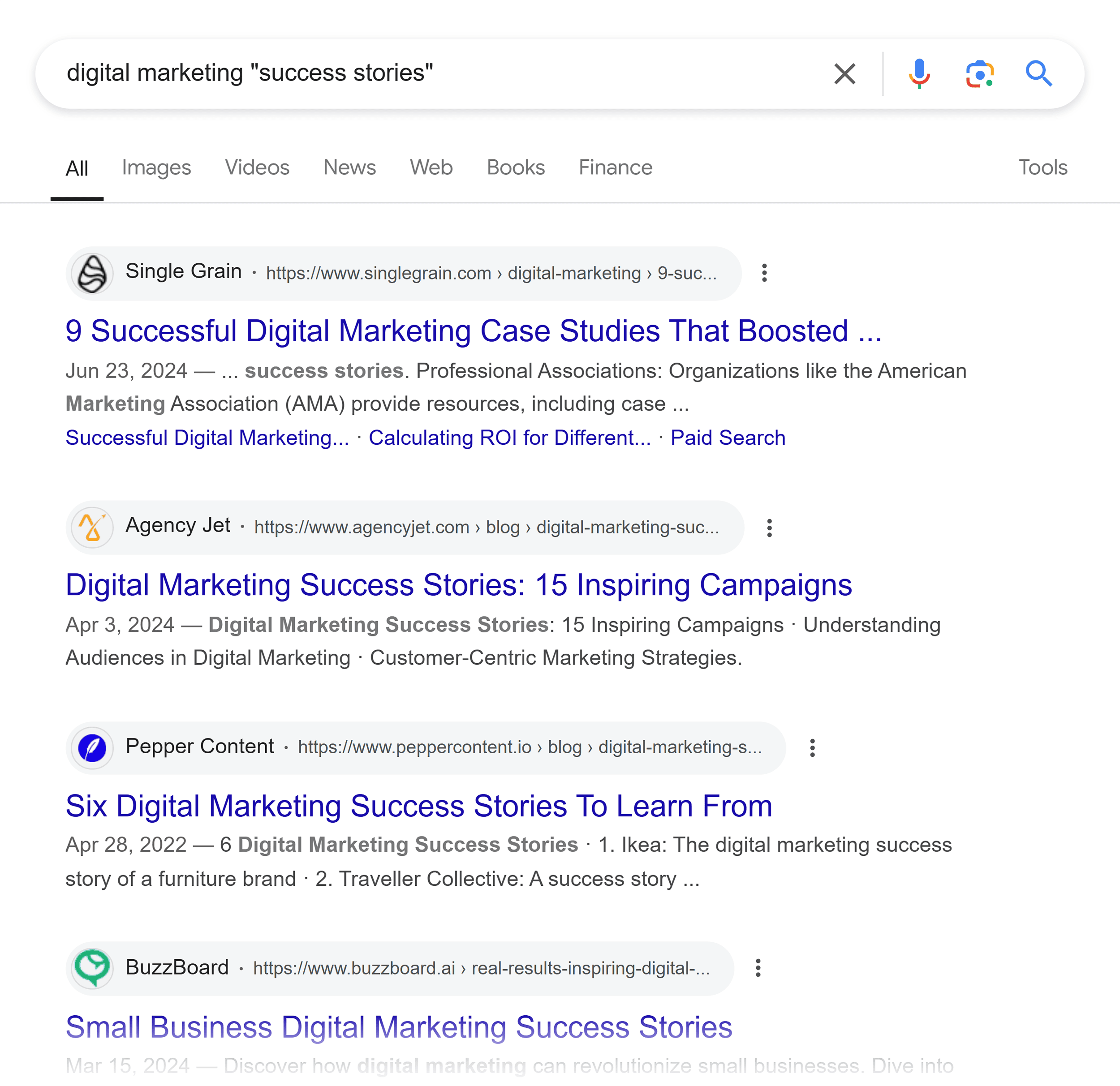
Learning how to find stories quickly lets you apply this strategy at scale. Making your content richer and more engaging without significantly increasing your production time.
S: Back Up Your Claims with Statistics
While storytelling is powerful, data plays an equally important role in making your content high-quality.
When you support your claims with statistics, you transform vague assertions into verifiable facts. Which adds credibility to your message.
Both readers and search engines appreciate that.
Plus, just by linking to authoritative and relevant websites, you’re signaling to users and Google that your content is well-researched and reliable. This is crucial for demonstrating your content’s alignment with E-E-A-T guidelines.

Statistics also offer a secondary benefit: you can easily transform them into visuals.
Below is an example that presents the fact, then supports it with a statistic. Then, the author turned the numbers into a graph to reinforce the point visually.
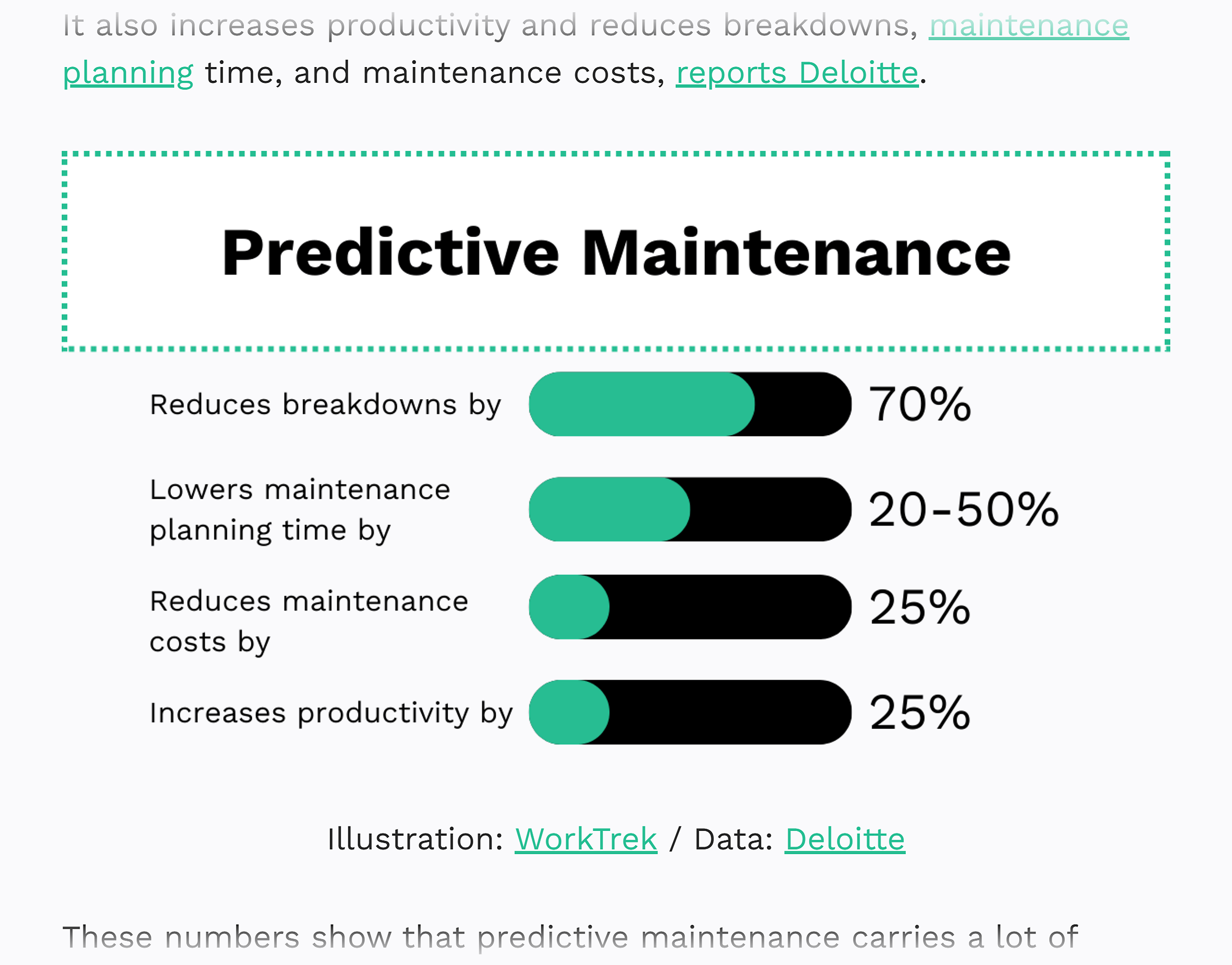
And here’s the best part: other people love citing data-rich content. Which means you can attract backlinks organically, without actively trying to build them.
We can see an example of that below, where one of our clients’ sites picked up a lot of backlinks for various different statistics within the same piece of content:
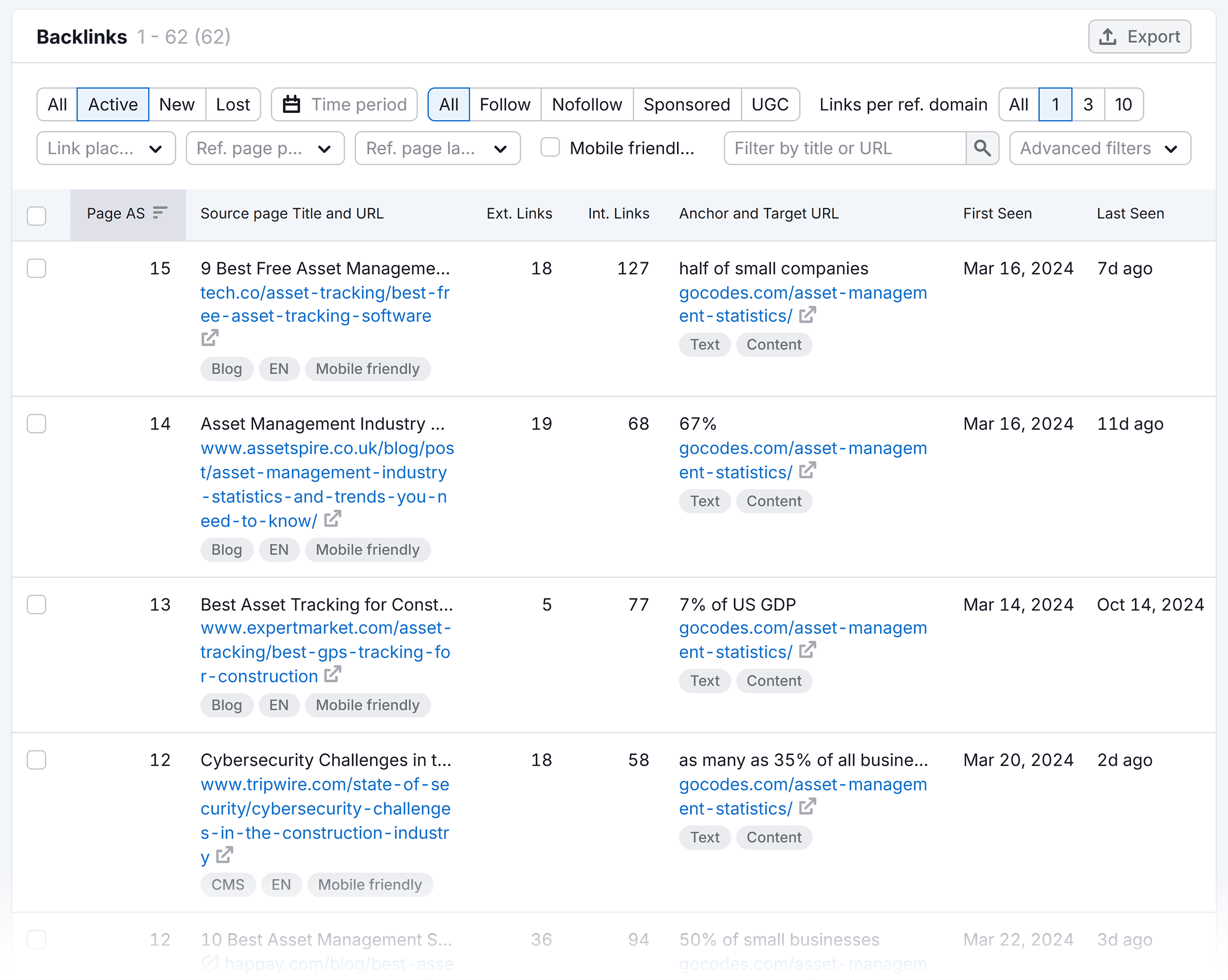
In the end, this creates a snowball effect: your content becomes more credible with data, more engaging with data visualizations, and starts earning more backlinks.
This can lead to higher rankings, and the cycle continues.
Grow Your Online Presence with Quality SEO Content
You can start applying the QRIES framework to any piece of content to improve its SEO and overall quality.
But putting it all together still requires great writing skills.
Check out our guide to content writing to find out how to blend what you’ve learned here with writing that engages and converts.
The post Quality SEO Content: The QRIES Approach for Better Rankings appeared first on Backlinko.
این خبر را در ایران وب سازان مرجع وب و فناوری دنبال کنید
جهت دانلود و یا توضیحات بیشتر اینجا را کلیک نمایید
این خبر توسط موتور ارتباط اقتصادی جمع آوری شده است در صورت مغایرت اطلاع دهید
